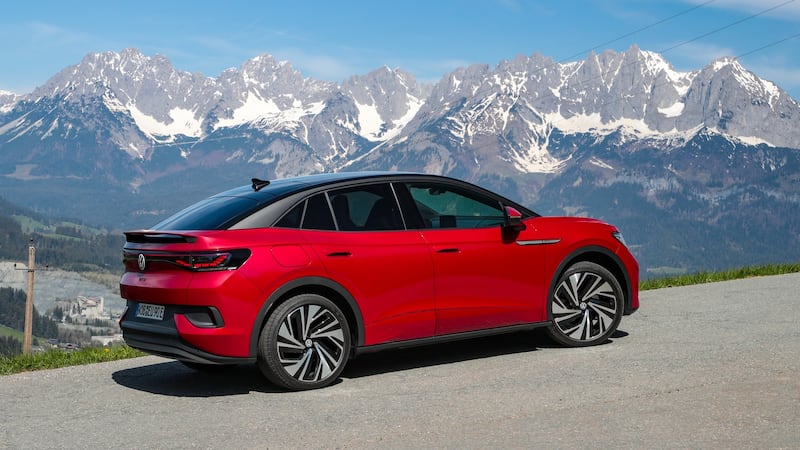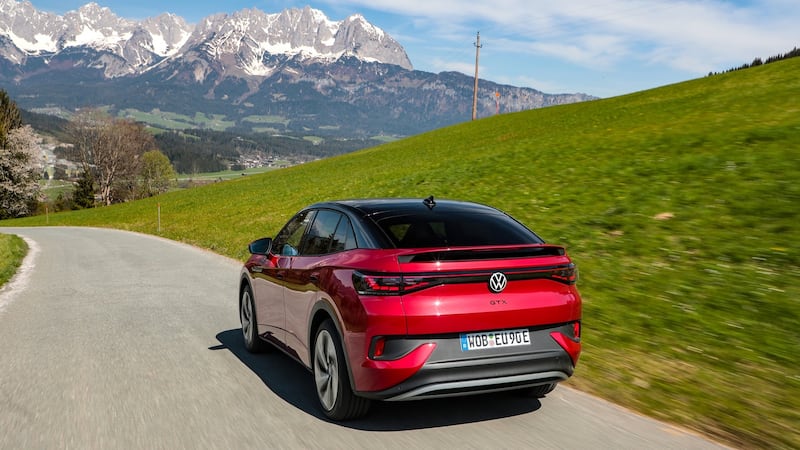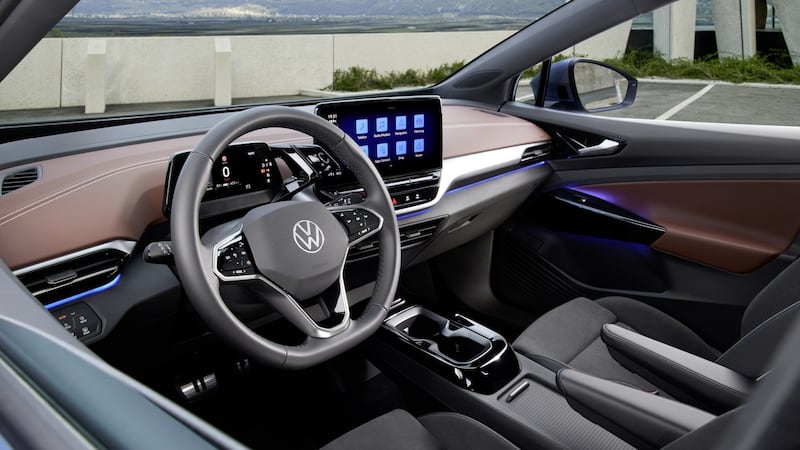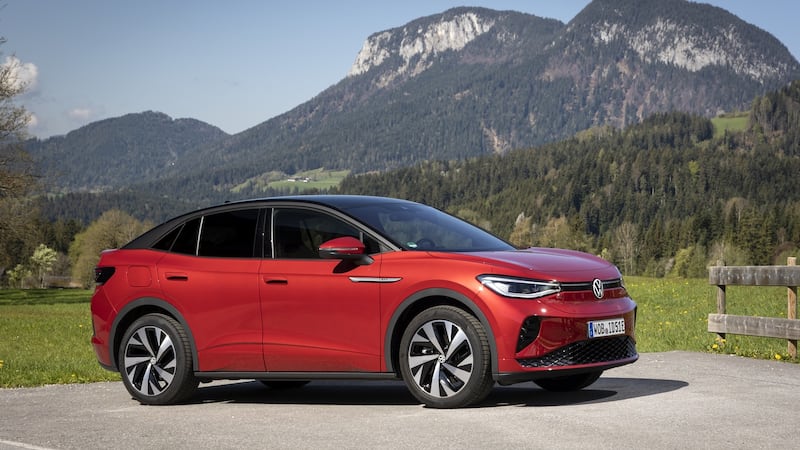Austria’s wonderful chocolate box scenery provided a breathtaking backdrop to the first test drives of Volkswagen’s ID.5.
The latest ID joins the ID.3 hatchback and ID.4 SUV to expand VW’s growing electric car range. The ID.5 name implies it is an equally distinctive model but in reality it looks like a coupe ID.4.
Like all coupe variants of SUVs, the ID.5 is a car that nobody was asking for. Ever since BMW gave us the X5-based X6, manufacturers have been building niche models to retain potentially bored customers from straying to rival brands.
The ID.5 fundamentally is an ID.4 under the skin with new bumpers and a sloping roofline that admittedly delivers a sleeker looking twist on what is a tall and blocky car.


Spacious cabin
Rather surprisingly, despite the roof’s profile, the cabin is spacious. The ID.5’s underpinnings has been tweaked to add an extra 15mm between the front and rear wheels than on the ID.4. This extended wheelbase delivers impressive rear head and leg room and negates the roofline’s impact on boot space.
At 4.6m long, the ID.5 is longer than an ID.4 and also notably longer than a VW Tiguan.
The reality with these coupe SUVs is that none of them have the allure of traditional coupes. These are not the cars that will feature on bedroom walls or as a chosen screensaver. So pride of ownership will most likely come from the technology featured.
Tech party tricks
A few new party tricks can be had in this car, such as an automated lane-changing system that can operate from 90km/h upwards, though when we say “automated”, it does require that you must have your hands on the wheel.
Another feature is Park Assist Plus with memory function. This system allows parking manoeuvres of up to 50m in distance, to be stored and recalled on demand to happen automatically (up to five manoeuvres can be stored).
If you have a tricky parking spot requiring a number of steering inputs, this gadgetry will make life a lot easier and save a potential scrape or two. If this sounds familiar you’d be right, as we have tested similar systems a number of years ago on BMWs and Fords.
VW has enhanced its voice control system so you can do the usual premium car stuff like saying, “I’m cold!”, and the car will automatically change the climate control to a warmer setting.
Our test cars (Pro and GTX models) featured significant innovations and options that will become available in time to all IDs, including “Travel Assist with swarm data gathering” that can access (with permission) other nearby VWs to collect cloud-based data about the road conditions near you to enhance safety.
Inside the cabin, it’s basically a rerun of the ID.4. The dash is well appointed, and our test cars had a premium feel. The primary controls were the familiar ID affair. A large 12in touch screen dominates the dashboard: yet while it looks smart it can also be a source of anxiety.

The centre touchscreen in ID models has been proven to be a source of frustration for users. Interacting with secondary controls can often be a will it/won’t it work experience. On day two of testing, our GTX’s screen needed a reset before we were on our way. In all other respects our cars behaved impeccably.
As a family car, there is plenty of load-carrying ability. The boot holds a very respectable 549 litres, rising to 1,561 litres with the rear seats down.
Range
The battery range from a full charge can be as high as 520km (WLTP) and 490km with the GTX. VW’s battery guarantees that after eight years or 160,000km, the battery pack will have at least 70 per cent of its original net capacity.
The ID.5 comes with an 11kW on-board charger and can charge at speeds up to 135kW through its CCS combo plug socket. VW says at its maximum DC charging capacity the ID.5 can gain up to 390km of range in 30 minutes.
Volkswagen used the ID.5 launch to introduce some interesting developments and services coming to the ID range. Volkswagen’s “Plug and Charge” function is set to make charging easier as it will facilitate a user’s car communicating directly with a charge point through its cable.

Once registered the charge supplier will then directly bill the registered owner of the EV for any electricity bought without the need to physically tap a charge card or in fact have one at all.
The German-built ID.5 arrives in Ireland in July. It will cost a premium over the ID.4. The entry grade will be the business model for €54,995 versus €52,595 for the ID.4 Business.
The GTX Max tops out at €71,545 net on the road, after €1,300 delivery and service charge).
Ultimately, the ID.5 is a fine but unremarkable car. You’d be hard pressed to justify the extra spend over the ID.4 or a host of similar EV crossover rivals.











